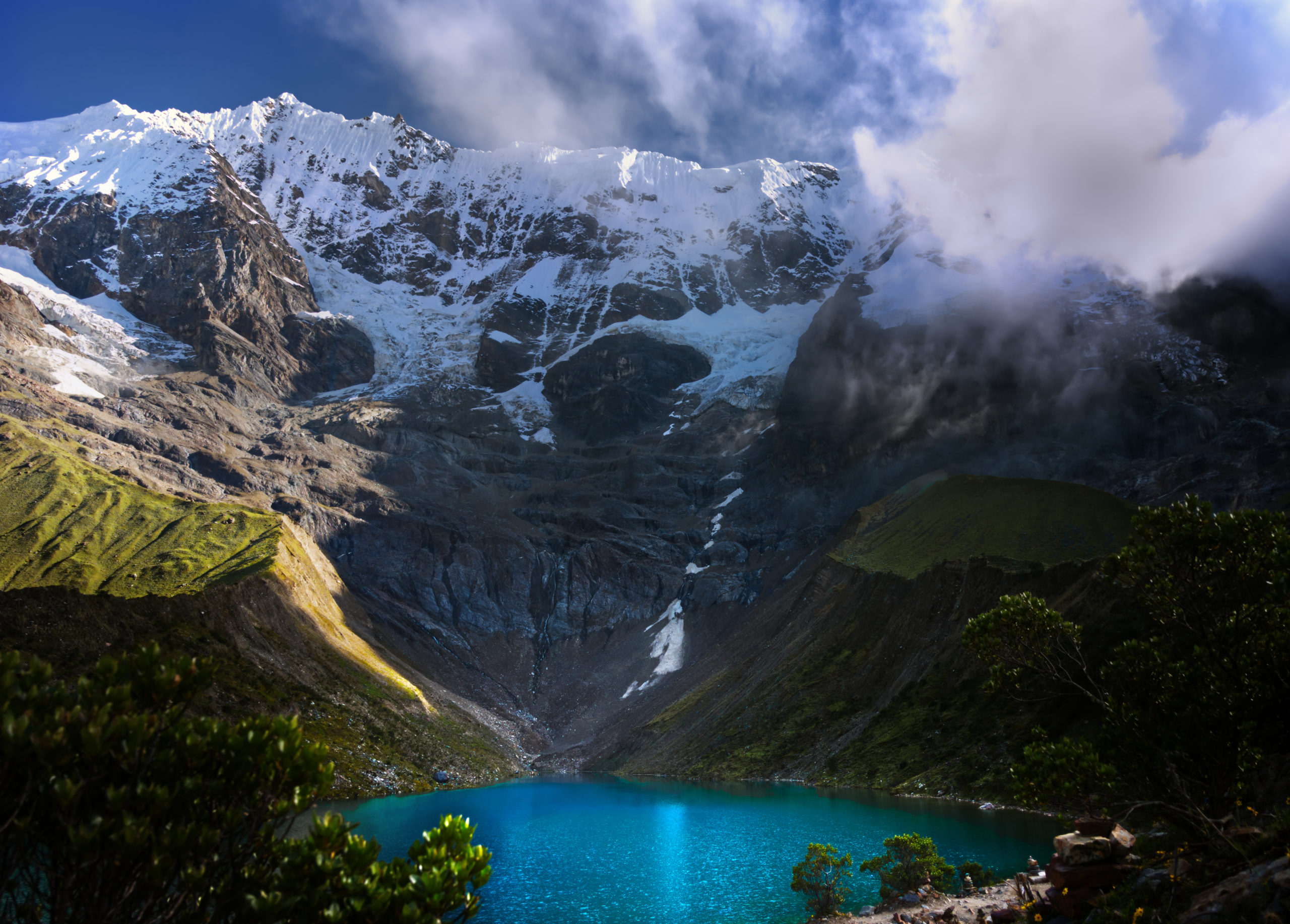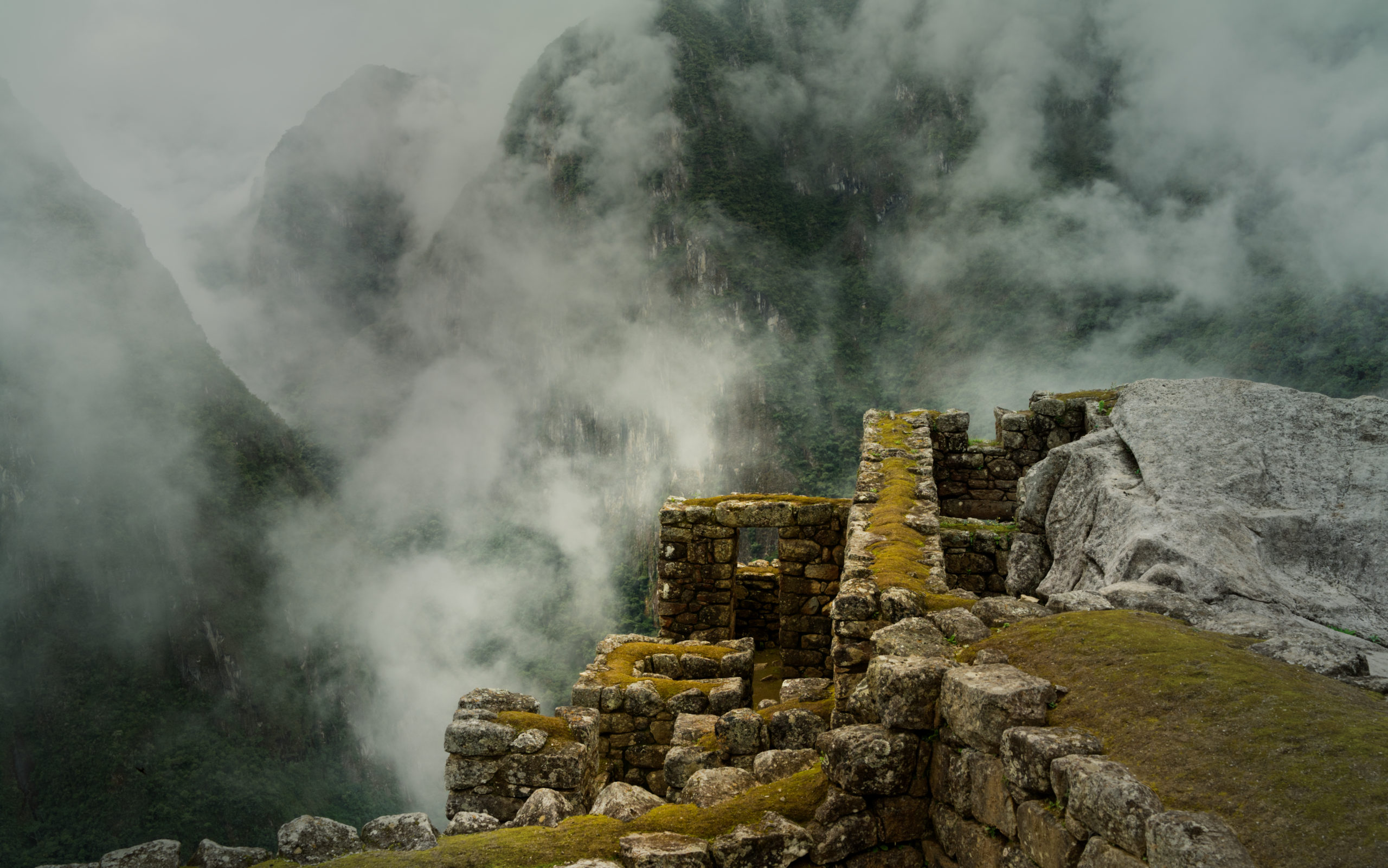A vastly biodiverse land, with deserts, beaches, high mountain ranges and large cities, some of which boast world-class restaurants – all in a relatively small nation: Peru. What captivated me about this well known but underrated travel destination are the snow capped Andean peaks, home to some of the most strenuous and breathtakingly beautiful treks the world has to offer, and the ruins of the lost city of Machu Picchu, one of the 7 wonders of the modern world.
We chose to visit Peru during the Southern Hemisphere’s fall, in the Spring of the North, due to the lower costs of accommodation the sparser crowds.
Our itinerary was centered around two major activities: the Salkantay Pass trek, taking us up to roughly 17,000 ft. and the Inca trail to Machu Picchu. Our bases were the towns of Cusco and Aguas Calientes, the latter being the gateway to Machu Picchu.
Although I had researched the elected activities before diving adventurously into the journey, and brushed up on my knowledge of Peru’s history and customs, I do have to admit that I wasn’t, quite frankly, as “prepared” as I thought I was. My first-hand Peru travel experience taught me some important lessons that I will be sharing with you in this article.

Altitude Sickness is a REAL Thing
I knew about the potential of becoming ill due to the high altitude, and even read several accounts of fellow travelers whose stay in high elevation areas had affected their health and plans. I naively thought that my many years of extensive trekking up and down the Italian Alps was sufficient training to get me through the Peruvian journey, but I was wrong.
Powering through the first section of the trek gave me the confidence that I was seeking. I felt I would be more than capable of withstanding the harsh Andean elements, elevation, and lack of oxygen. “This is no problem”, I thought to myself as I climbed the path and hopped over streams, until… I became incredibly ill in just a few instants. With an unbearable headache, an inability to take full and deep breaths, and a chill that froze me to my very core, I managed to drag my bones to the camp and ask the guide for assistance.
Several hours (and painkillers) later, I was still uncontrollably gasping and jolting from the lack of oxygen and excess of pressure in my brain. The pain was unbearable and I was delirious. Sometime that night, the guide decided to take control of the situation and administer oxygen from an emergency tank. I secured the mask on my face and attempted a deep breath, then another, and another. In just a few seconds, I felt the gas inundate my lungs and the immense pressure in my head dissipate. Thankfully that got me back on my feet and I was capable of completing the rest of the trek, although it would be days before I restored my full strength.
What’s the moral of the story, you may be wondering: Don’t underestimate altitude sickness, as it can really affect your health and your travel plans. Take it easy the first couple of days if planning to mountain trek or through hike on the Andean peaks. Ideally, you want to get acclimated in Cusco before embarking on high mountain trails.
Be mindful that altitude sickness can also affect your stay in Cusco, as the city is at about 11,150 ft. above sea level. Coca leaves, chewed and kept between your molars and cheek, or infused in hot water as a tea, will energize and allow you to breathe with more ease. Use oxygen if necessary – even only a few minutes of inhaling will improve your ailment significantly, if not dissipate it entirely. Learn this lesson from my stubborn self and acknowledge your limitations before pushing too hard to the point of causing yourself harm.

Visiting Machu Picchu?
If you plan to visit Machu Picchu, as we recommend you do, and purchase the tickets online (https://www.machupicchu.gob.pe/?lang=en), be advised that the entrance to the park doesn’t include a map or guided tour of the site. It is a very good idea to purchase a map at the kiosk outside the park if you do not hire a guide. Many official, as well as unlicensed, guides wait daily at the Aguas Calientes bus terminal as well as the park entrance, so you won’t have trouble finding a last minute chaperone.
There are several Machu Picchu trails to choose from, and the circuit you pick will determine which areas you will be allowed to visit. The add-ons to the standard tour, if they are not included in the ticket you hold, will incur an additional fee payable at the trailhead’s checkpoints. Most trails inside the archaeological park range from a duration of 1 hour up to 4 hrs.
The trails inside the park are one way, meaning that if you make a wrong turn at some intersection you won’t be able to retrace your steps and go the other way. Guides dispersed through the site will strictly enforce the one-way rule. If you hear someone whistle, look around as that may be an attendant trying to signal that you are going the wrong way. For the most part, arrows mark the direction in which you are required to go, but not always. If in doubt, ask the park attendant patrolling the trail.
Machu Picchu is located in the cloud forest at 7,900 ft., therefore don’t be surprised if you find the ruins entirely enveloped in fog, dew and thick cloud cover, especially when visiting in the early morning. Visibility will improve later in the day as the mist clears out. Temperatures are usually mild all-year round, but humidity is a constant companion. Bring a bug repellent to keep away the buzzing insects and hiking boots to walk comfortably on the slippery paths.
Last piece of advice with respect to Machu Picchu is that it is prohibited to bring food in the park. Also, there aren’t any facilities inside the site – no restaurants nor toilets. If you have a legitimate medical condition requiring you to eat every so often, bring a note from your doctor. It might be necessary for you to show a medical note from a practitioner at the checkpoint if wanting to bring in food.

Protect Yourself from the Elements
This may seem a given, but do not forget to bring sunscreen and a hat if trekking. Sun is your friend but in moderation. Sunrays at 15,000 ft. are undeniably much stronger than at sea level. Be sure to apply sunblock on exposed areas before venturing out for the day, even when cloudy or cold. The UV rays can penetrate the cloud cover and cause serious burns. I used SPF 30 on the Salkantay Pass trek and I still suffered sunburns.
You will need a hat with ear flaps to seek shelter from the sun and protect from the sudden gusts of chilled wind that may occur while on the high trails. Leaving your ears unprotected may cause severe headaches.

Hydration Matters
Stay hydrated as much as possible. Drinking water and coca or muña tea will help attenuate the symptoms of altitude sickness. Water, when consumed often and in small sips, will help to reduce dehydration which can sometimes contribute to acute mountain sickness (AMS). An additional liter of water (about 0.27 of a gallon) will suffice to compensate for dehydration due to high elevation.
The locals praise muña for its soothing properties. The herb is commonly drunk anytime of the day to relax or appease an upset stomach. Coca tea, on the other hand, will hype up your energy level and steady your breathing pattern, and it’s usually consumed in the morning and earlier afternoon.
You will ubiquitously find both muña and coca tea in restaurants, bakeries, hotel halls, and breakfast parlors. The leaves can be steeped from either a freshly harvested plant or dried in a single use bag.
Avoid the Tourist Traps
Don’t be surprised if people approach you to ask if you need a taxi, a guide, a massage, or you’d like to dine at their authentic Peruvian establishment. The tourist infrastructure is very prolific in places such as Arequipa, Cusco, and Aguas Calientes, and the locals try to make a living by selling their time and services to tourists for a tip or a very nice trip Advisor review.
My recommendation is to avoid staying too close to the popular tourist attractions, and rather seek out apartments or hotels in quieter residential neighborhoods. For Cusco, my recommendation is for you to stay in an apartment in San Blas neighborhood. This artistic and eclectic barrio, which is far enough from the tourist hustle and bustle and yet less than a mile away from the the old city center, offers a myriad of bars, vegan cafes, art galleries, and artisanal markets, not to mention beautiful vistas over the city of Cusco.
Onto the next recommendation… Two rivers run through the town of Aguas Calientes: the larger Urubamba and the smaller but feisty Rio Aguas Calientes – the latter cuts right across town. I strongly suggest that you stay on the side of town where the station and the artisanal markets are located. The station side is, believe it or not, less popular and more quaint than the other side, which hosts tourist information offices, spas, bars, and countless restaurants. It’s fun to take a stroll up and down the main entertainment street (Ave Pachacutec), but in moderation. I wouldn’t want to walk on that street several times a day getting in and out of the hotel.
Take away message: Choose to immerse yourself in into the daily routine of the local community, as opposed to having an extravagant, exotic stay right in the center of the tourist scene. This choice makes for a much more interesting and enriching journey.

Final Thoughts
Peru is a soul cleanser, a spiritual place that will change your outlook on life, if you will allow it. Be prepared to reprioritize your expectations upon returning home, should you choose to approach your Peru travel experience from a spiritual perspective.
I personally came back to my life feeling petty and unsettled, but also determined to get the most out of my tiny speckle of existence on this Earth. I quit my 9 to 5 job and took the time to analyze my interests, strengths, and weaknesses. I took the time to heal from the sense of alienation that western consumerism causes and chose to re-center my focus on the meaning of FEELING the here and now.
The journey truly was a kind of magic.



